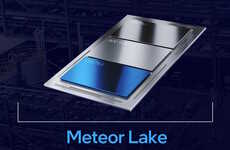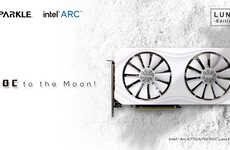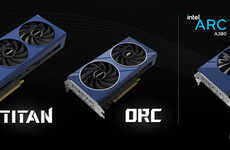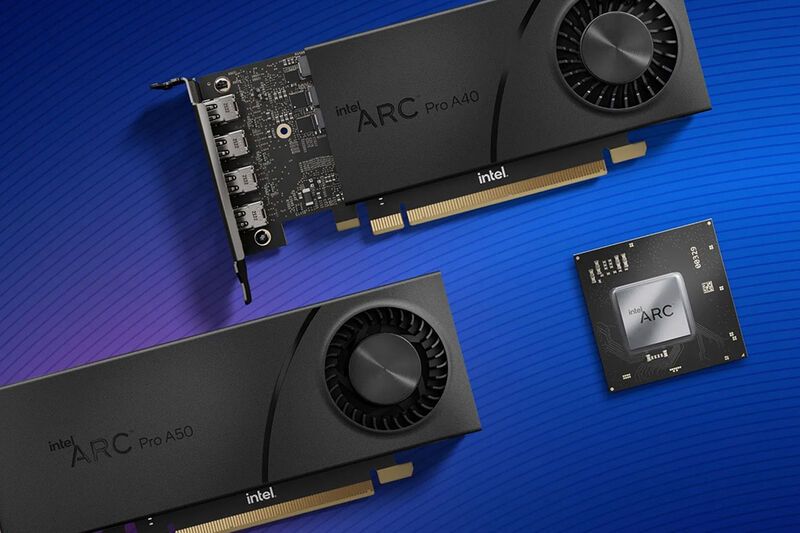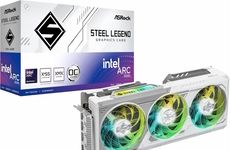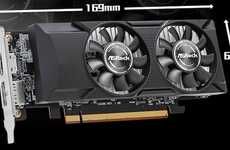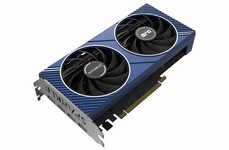
Intel Unveils the Sleek Three-GPU 'Arc Pro' Collection
Intel has recently launched the ‘Arc Pro’ series, a lineup of GPUs which are designed to enhance productivity through three unique tiers. The collection includes the ‘A30M,’ the ‘A40,’ and the ‘A50,’ with the first of the three being a laptop GPU and the second being a desktop version.
The ‘A50’ boasts a dual-slot configuration, 4.80 teraflops of power, and four mini-display ports that can connect a variety of displays depending on the resolution and refresh rate. Similarly, the ‘A30M’ and the ‘A40’ utilize 3.50 teraflops of power, but the ‘A40’ offers 6GB of VRAM just like its ‘A50’ partner. All models come with built-in ray tracing and machine learning, making them perfect for any educational environment.
Interested parties can visit Intel’s website to learn more about the ‘Arc Pro’ collection.
Image Credit: Intel
The ‘A50’ boasts a dual-slot configuration, 4.80 teraflops of power, and four mini-display ports that can connect a variety of displays depending on the resolution and refresh rate. Similarly, the ‘A30M’ and the ‘A40’ utilize 3.50 teraflops of power, but the ‘A40’ offers 6GB of VRAM just like its ‘A50’ partner. All models come with built-in ray tracing and machine learning, making them perfect for any educational environment.
Interested parties can visit Intel’s website to learn more about the ‘Arc Pro’ collection.
Image Credit: Intel
Trend Themes
1. Productivity-focused Gpus - There is an opportunity for creating more GPUs with features that prioritize productivity.
2. Multi-display Ports - Manufacturers can focus on designing GPUs with more multiple display ports to support a variety of displays and resolutions.
3. Built-in Ray Tracing and Machine Learning - GPU manufacturers can invest in developing more products with built-in ray tracing and machine learning capabilities that can support various applications.
Industry Implications
1. Graphics Card Industry - GPU manufacturers can leverage the growing demand for productivity-focused graphics cards to gain a competitive advantage.
2. Education Industry - Educational institutions can explore the use of graphics cards with built-in machine learning and ray tracing capabilities to enhance their teaching environments.
3. Technology Industry - There is a demand for more powerful and efficient graphics cards that can support a variety of applications, which presents opportunities for technology companies to develop cutting-edge products.
1.9
Score
Popularity
Activity
Freshness


